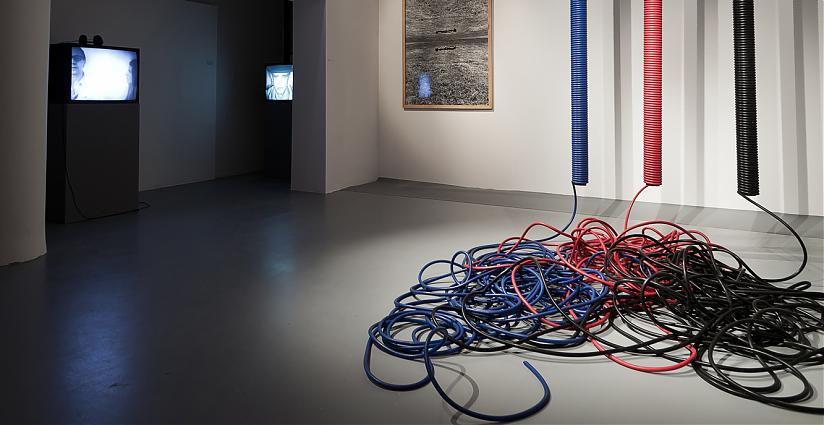The Third Room

"The Third Room" is an “exercise at a distance” between two institutions: Kunsthalle Düsseldorf and the Museum of Modern Art in Warsaw.
This parallel exhibition is taking place simultaneously in Düsseldorf and Warsaw, cities separated by almost 1000 kilometers. For several weeks, specially designated spaces serve as a laboratory where research into analogies, differences, and hypothetical relations between the two sites has been compressed. The exhibition focuses on certain less obvious phenomena and cultural processes imagined and developed at the Kunstakademie in Düsseldorf and the Academy of Fine Arts in Warsaw between 1961–2011. The curators will not announce the changes in the exhibition display over the course of its subsequent iterations in order both to encourage participation and invite the public to visit more than once. The exhibition starts with the opening in Düsseldorf and concludes with the finissage in Warsaw.
The dual project explores affinities between methods and experiences at the Düsseldorf Kunstakademie and the Warsaw Academy of Fine Arts, with a particular focus on the results of the alternative pedagogical systems, theories, and practices of two eminent professors, Joseph Beuys’ “social sculpture” and Oskar Hansen’s “open form.” The Düsseldorf installment features work by Polish artists from the Hansen tradition (KwieKulik, Zofia Kulik, Grzegorz Kowalski), as well as Professor Kowalski’s own masterclass, the “Kowalnia” (Paweł Althamer, Artur Żmijewski, Anna Molska, Anna Niesterowicz). Correspondingly, the Warsaw section presents work by artists associated with the Academy in Düsseldorf, notably the students and colleagues from the circle around Joseph Beuys (Blinky Palermo, Imi Knoebel, Katharina Sieverding, Franz Erhard Walther, Klaus Rinke, Gerhard Richter, Ulrike Rosenbach, Reiner Ruthenbeck). Also presented are a series of collaborations by Gerhard Richter with Isa Genzken, Sigmar Polke, and Blinky Palermo, as well as documentation of Beuys’s actions (in particular his celebrated performance with a coyote I Like America and America Likes Me and the action Fettecke), along with a contrary reading of “social sculpture” in Lutz Mommartz’s film Soziale Plastik. Exhibitions in both cities feature parallel interventions or new works prepared especially for the occasion: Josiah McElheny’s two-city installation Room 19/20 or Correction Room/Academy, a road movie by the duo KwieKulik which documents their journey to Germany and meeting with Beuys in 1981, and an intervention by Nam June Paik’s student Pash Buzari, formerly associated with the Kunstakademie.
The title "The Third Room" is a metaphor for the “space in-between” institutions, cities, masters and students; and more specifically, it is suggestive of the numbering of classrooms and studios in the academy: Room 3 and Room 20 (Raum 3, Raum 20) were Beuys’ main working spaces and rooms for critiques, and the famous Room 19 (Raum 19) which was used and annexed by his students (Palermo, Sieverding, and later occupied mostly by Imi Knoebel and Imi Giese) who transformed it into their own private laboratory in reaction to the concepts and character of their professor, including enactment of the literal separation between teaching and praxis, at the very beginning of the formation of the democratic “open studio” (Room 20). Room 19 was kept under lock and key, one bestowed on the students by Beuys. As it turned out, however, by 1966 the space was made inaccessible to the master…
Artists:
Josiah McElheny, Imi Knoebel, Blinky Palermo, Edward Krasiński, Reiner Ruthenbeck, Joseph Beuys, Oskar Hansen, KwieKulik / Zofia Kulik, Grzegorz Kowalski, Paweł Althamer, Grupa Nowolipie, Artur Żmijewski, Anna Niesterowicz, Łukasz Gutt, Anna Molska, Angela Fette, Pash Buzari, Sigmar Polke, Gerhard Richter, Stefan Höller, Isa Genzken, Ulrike Rosenbach, Klaus Rinke, Katharina Sieverding, Franz Erhard Walther, Prot Jarnuszkiewicz, Colin Lang.